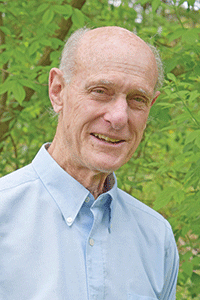
Fourth of a winter series
A century ago, young and somewhat older residents of southeast Minnesota did not always pass personal time indoors during long winters. When work was completed, recreation thrived outdoors in January as well as in July. In the first half of the 1900s, ice skating was a given on a large lake in Hokah, the Big Slough in Houston, the Mississippi River and on rural ponds. But where there were no such natural water surfaces, such as on higher ground in Caledonia and Spring Grove, there was ice skating, too. But it took organizing, planning and physical labor. There were also financial concerns, which called for sponsors or fundraising.

Photo courtesy of the Houston County Historical Society
According to a December, 1926 Caledonia newspaper account, “The Community Skating Rink on the public school grounds will open for the season with a big carnival. Nearly 500 people crowded their way into the city hall on Friday evening, January 29th to attend the second annual skating rink benefit dance, and once inside refused to go home until both the Caledonia orchestra and the old time musicians were used up. Dancing started at about 8:30 and not until the clock had worked its way around to 3:30 did the dancers let the music go home. The Skating Rink Association was well pleased with the support received at the dance and wishes to thank the musicians and all others whose co-operation helped to make the affair a success.” It is possible the dancing was more attractive than skating that night, but there was a financial need and also an organization and volunteers to ensure that skaters would have a place to skate.
In January of 1941, the Caledonia Commercial Club sponsored relay races, barrel races, couples races and backward races – all on ice. Skating took place where the elementary school would later be built in 1950. That rink was on a flat upper surface. and after skating, the kids could sled down to the lower surface. Some former skaters also mentioned skating in the park behind City Hall and at Hokah Pond – whatever or wherever that was(?) It was once proposed that there should be separate skating rinks for girls and boys, but that did not happen.
In the late 1950s and early 1960s, the skating rink and warming house in Caledonia was located at one end of the Veterans Memorial Recreational Area. The warming house was an unpretentious old metal shed with an old stove, plank benches for seating and an uneven floor beaten up by young skaters passing through on skates.
No matter the location of the skating rink in Caledonia, Archie Longueville was responsible for flooding, maintaining the ice and “maintaining law and order in the warming house and on the ice,” according to Helen Houlihan. But Longueville, who was most remembered as the guy who sharpened your skates. was an ice skating institution in Caledonia, prompting Houlihan to write, “Archie, I’m sure is flooding a skating rink in heaven.”
Houlihan, when she skated during mid-century, at first did not have her own skates and borrowed a pair from a girlfriend. “My thrifty mother ordered me a pair, a size bigger, for Christmas, thinking that they would last me for more than one season.” Writing in 2003, Houlihan said those skates and bulky red wool stockings were still in her closet and were still too big. “My feet never grew into them.”
Mary Lohff Thompson reminisced about her youth in Caledonia in the 1930s and 1940s. “We would go skiing in the winter using a broom handle for a pole and overshoes strapped onto our skis. Our school playground would be flooded for our ice skating rink. During those years of the Great Depression, there was a CCC (Civilian Conservation Corps) camp at the fairgrounds in Caledonia, which according to one lady, made it “such fun to go ice skating as there were always some CCC fellows to partner up with.” However, Thompson noted that many of those young men were from the South and had never before seen snow. Even those who had seen snow were not accustomed to ice skating. “We had a “show” watching the CCC’s from Arkansas and Missouri, etc., trying to ice skate!”
Source: the book, “Caledonia Pride, 1854 – 2004”


Leave a Reply